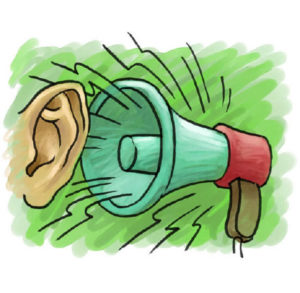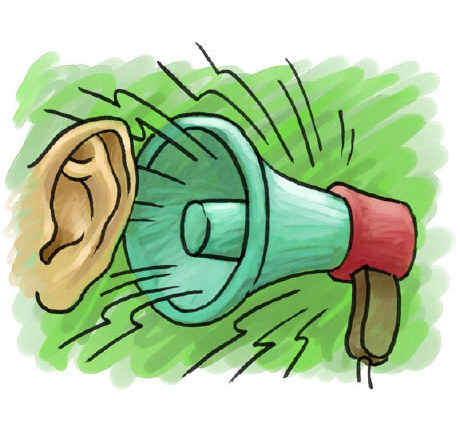Mumbai authorities keep dreaming of Mumbai becoming a world-class city; but, there is a huge gap between dreams, fantasies and reality. A few months back I wrote how far were we from the Mumbai authorities’ dream of converting Mumbai into another Shanghai (Read: ‘Can Mumbai Become Another Shanghai?’). Most people agreed with my opinions but there were some die-hard loyalists who said that though they agreed Mumbai was largely unlivable, they didn’t like it that I hadn’t written anything good about Mumbai. They failed to realise that I had given practical steps for Mumbai’s dream to be realised and hence it was necessary to show Mumbai, warts and all, the way it is; I am not a politician or a diplomat and hence I call a spade a spade.
Just why is Mumbai becoming unlivable? It is not just the ubiquitous filth but also lack of infrastructure, discipline and will to do something about it. Lets take the case of Noise Pollution. I have lived in Mumbai for the last forty years and I have seen the decline of this once great city. The noise levels were not so deafening as now. In southern part of Colaba, for example, there is still a sign declaring it to be ‘A Calm Zone’. However, it is now just a sign with no meaning. The noise levels are at the level of crescendo especially during the festival season that follows immediately after the rains. So, whilst during the rains we have to reckon with the misery of pot-holed roads and water-logging everywhere (Read ‘Why Must We Love Indian Roads?’), just as the rains start getting over we have to reckon with pooja-pandals coming up right on the roads, together with ear-splitting noise (Read ‘A Quieter Mumbai – Is It A Pipe Dream?‘)
Following the principle that majority has to be right and can’t be ignored, we crouch and cringe but have no voice against this invasion of noise and our liberty and safety. Whatever decibel and time limits are set by the authorities are followed more in exception than in observance. Most of us would want the authorities to somehow control the unwanted noise, chaos and unsafe conditions. We have a charitable trust and non-governmental organisation called Awaaz Foundation which has done an enormous dedicated work to keep the authorities and others under check so as not to have unfettered environmental pollution. However, it is always a losing battle. The Foundation was started on 26 Feb 2006 by Sumaira Abdulali and has many successes against “environmental villainy” at personal risk to the founder. Wikipedia has this to say about Noise Pollution:
“Noise pollution can cause annoyance and aggression, hypertension, high stress levels, Tinnitus, hearing loss, sleep disturbances, and other harmful effects. Anti-Social Behaviour such as uses of Loudspeakers is a highly sensitive social issue in India.
Among the major forms of pollution in India is noise pollution. There is no parallel in the world to the noise pollution generated during festivals and religious celebrations in India. For Indians, making noise is a sign of happiness. For politicians the ability to make a big noise, by using huge loudspeakers at any opportunity, is a sign of strength. Festivals in India have become political battlegrounds as politicians try to score brownie points over one another by attempting to host the noisiest festival.The use of loudspeakers, permitted by the courts on certain occasions, often exceeds the permissible decibel limit, causing a great deal of stress and anxiety to the neighbourhoods.”

Maharashtra and Mumbai ain’t amongst the success stories of reduction of Noise Pollution. Governments here, following the dictum of “people’s sentiments need to be respected“, often turn a deaf ear towards any pleas to reduce the noise levels. This year, for example, the state government has decided to extend loudspeaker deadline for Ganpati mandals for one additional day. Earlier, whereas loudspeakers were to be switched off by 10 PM and on two days during Ganeshotsav up to midnight, the government has now permitted one additional night of loudspeakers up to midnight and “traditional musical instruments” through the night on Anant Chaturdashi (the tenth day) with decibel restrictions in place.
All this news, as above, was in The Times of India 12 Sep 12 issue. To enable this, another news item said that the BEST (Brihanmumbai Electric Supply and Transport, a government run body in Mumbai, has offered “concession of nearly Rupees 8 per unit on power consumption to Ganpati pandals.” The news further went to add: “The mandals will save a lot of money towards power consumption. Also, they can light up the pandals and use brighter light for decoration” said a BEST official. The BEST electricity, of course, is also used for loudspeakers and generating noise. So, we have a situation where we have state sponsored noise. The very next page in The Times of India had another news item titled: ‘BEST reels under Rs. 3,300cr losses.’
The Awaaz Foundation page on Wikipedia covers instances where the state government was reluctant and even opposed to making rules and laws against Noise Pollution. But, even though these laws, as with most laws in India, are mostly on paper, people are always looking at ways and means to by-pass these too.
I, and I am sure there are many like me, pray that a day will come when people and authorities would realise that Noise Pollution is as bad as any other form of pollution. The festival season is just starting and with one reason or the other will continue almost until the end of the year. Read my take on the Diwali, for example, on ‘In The War Zone‘.
Festivals should be happy occasions for all. I wonder who is happy with loudspeakers and crackers and drum-beats late in the nights?

Students studying and people in the hospitals would be the worse affected. I think this time we should have some Ganesha idols with him closing both ears as a symbolic request to shut down all those loudspeakers!
What an idea, pal? Using Ganesha idols to block the noise being made for him! Bravo!